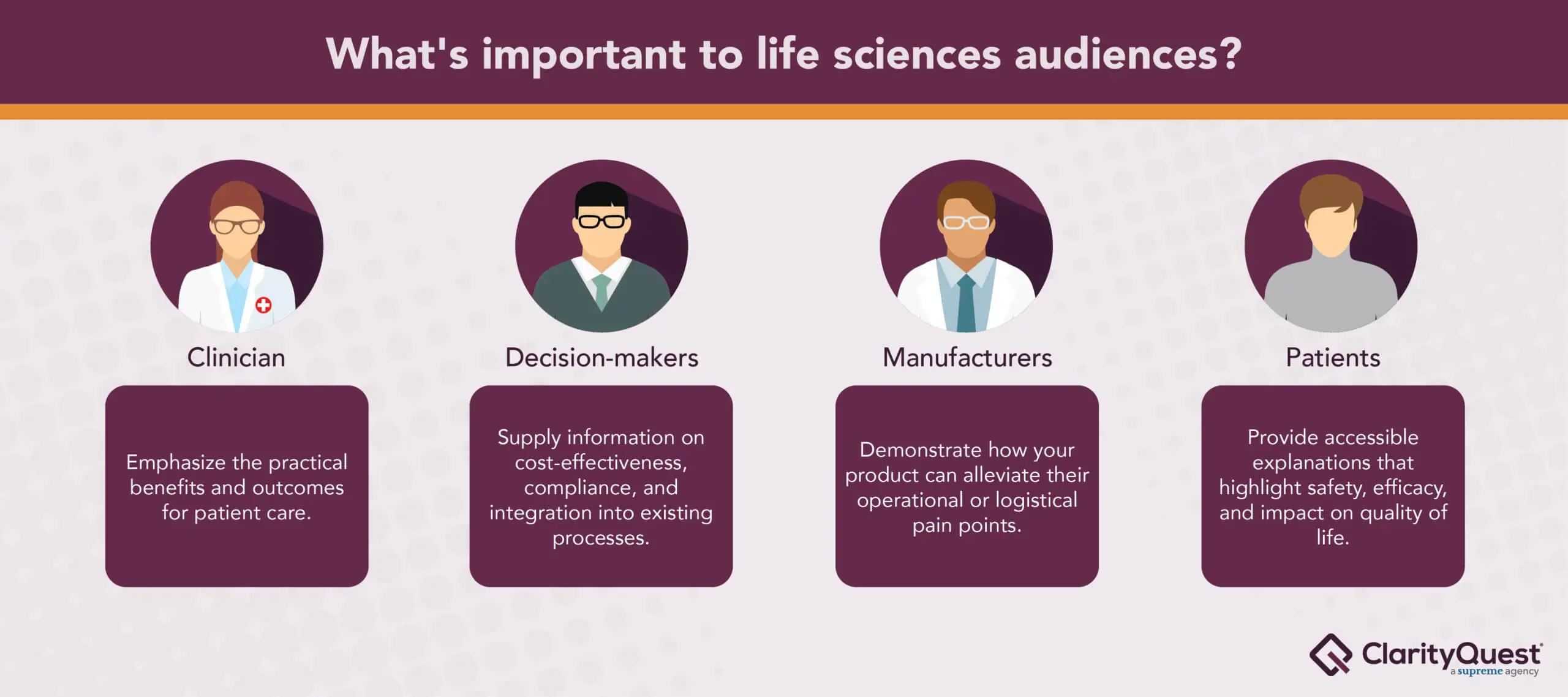Content marketing for complex life sciences products presents unique challenges.
These products often involve intricate technologies, sophisticated data, and advanced scientific principles that can be difficult for a broad audience to understand.
However, the very essence of effective life science content marketing lies in the ability to distill complex information into accessible, engaging, and valuable content for your target audiences.
Here are 5 tips to make it easier.
1. Understand your audience
The first step in creating effective content for complex life sciences products is thoroughly understanding your audience.
Your audience may include clinicians, decision-makers in biotech settings, pharmaceutical manufacturers, and sometimes, even patients who are becoming increasingly informed about their healthcare choices.
Each group has distinct needs, levels of understanding, and interests. Developing personas for each audience segment means tailored content that speaks directly to their concerns, challenges, and aspirations—making for a much more compelling piece.
- For clinicians, emphasize the practical benefits and outcomes for patient care.
- For decision-makers, displaying cost-effectiveness, compliance, and integration into existing processes is crucial.
- For manufacturers, demonstrate how your product can alleviate their operational or logistical pain points.
- For patients, accessible explanations that highlight safety, efficacy, and impact on quality of life matter most.
2. Simplify without diluting
One of the main challenges in life science content marketing for complex products is communicating intricate details in an accessible manner. However, simplifying does not mean diluting a product’s scientific value or complexity; rather, it involves presenting information in a clear, concise way that is easily understood.
Breaking down these concepts into more manageable pieces is an effective strategy. Use analogies and metaphors to relate complex ideas to everyday experiences. This approach helps make the content more relatable and more accessible.
3. Make use of diverse content formats
The complexity of life sciences products often necessitates a range of content formats to effectively convey information.
Depending on your audience and the nature of the product, different formats can be more effective:
- Blogs and articles are great for explaining concepts, sharing news, and offering thought leadership.
- Infographics and visual aids can simplify complex information and make it more accessible.
- Videos and webinars offer dynamic ways to demonstrate products, explain mechanisms of action, and provide expert insights.
- Whitepapers and case studies give a deeper dive into the data, research findings, and detailed analyses for a more technically savvy audience.
The key is to create a content mix that caters to the preferences and needs of your diverse audience, ensuring that you engage them in the format they find most compelling.
4. Prioritizing SEO for targeted reach in niche markets
When marketing a complex product, ensuring your content reaches the right audience is paramount—making SEO optimization a key strategy.
Whether it’s clinicians, decision-makers, manufacturers, or patients, each segment uses specific search terms and queries to find relevant information online.
By optimizing your content and website for SEO, you ensure that these individuals—those who already possess a foundational understanding and interest in your content—can easily discover it.
5. Collaborate with experts
Collaborating with scientific experts and industry influencers can help simplify complex information, lend credibility to your content, and provide insights, explanations, and endorsements that resonate with your target audience.
Lastly, partnering with a life sciences marketing agency experienced in complex products is an excellent strategy to employ.



